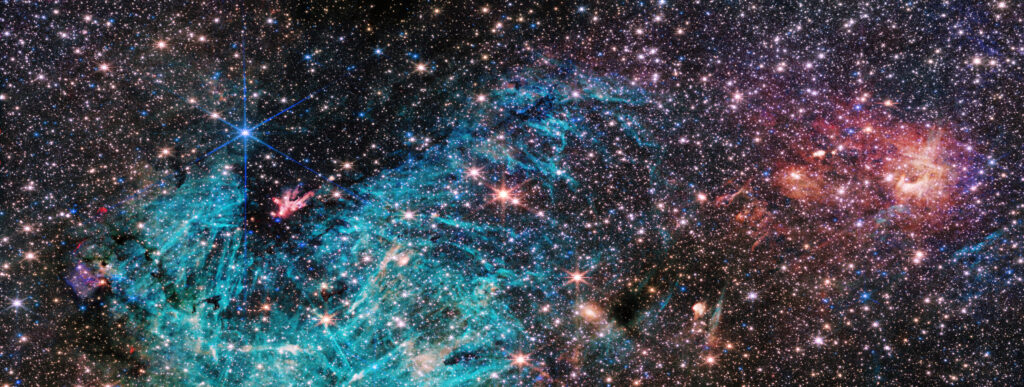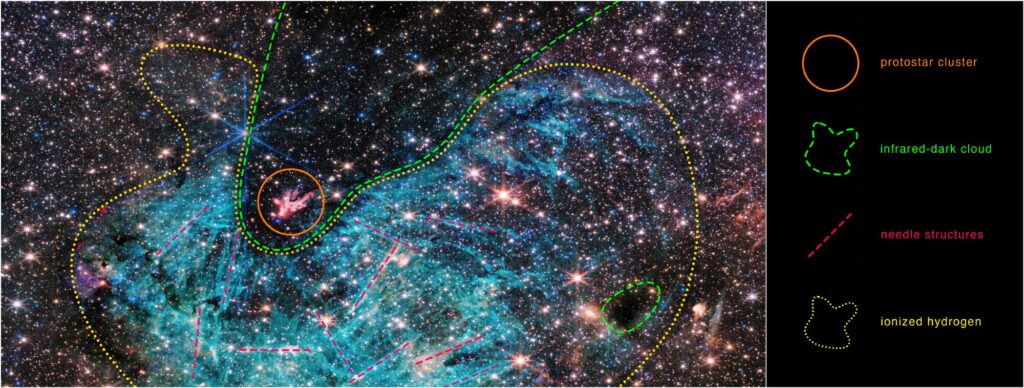Astronomers working with the James Webb Telescope (JWST) used it to observe the centre of the Milky Way. They managed to find a lot of previously unknown details.

The centre of our galaxy is an extremely turbulent place. Stars form in its turbulent, magnetised gas clouds, which then affect the surrounding gas with their outgoing winds, jets and radiation. However, observations of the centre of the Milky Way are seriously complicated by gas-dust clouds covering its centre, which absorb visible light. Fortunately, infrared radiation is able to enter through the dust curtain. Therefore, astronomers were looking forward to the opportunity to direct JWST to this area with its unsurpassed resolution and sensitivity.
The space telescope fully met the expectations placed on it. JWST captured Sagittarius C, a region of active star formation that is located about 300 light-years from the supermassive black hole Sagittarius A*. There is a cluster of protostars among about 500 thousand luminaries caught in the telescope image. They are still forming and gaining mass, creating streams that glow like a bonfire in the middle of a dark cloud.
At the centre of this young cluster is a protostar which has a mass 30 times the mass of our Sun. The cloud from which protostars are formed is so dense that it blocks even the infrared radiation of the stars behind it. As a result, it seems less densely populated, although in fact it is one of the densest areas in the picture. The image is dotted with smaller clouds darker in the infrared range, similar to holes in the star field. Future stars are formed there.

The near-infrared camera (NIRCam) mounted on the telescope also recorded large-scale radiation of ionised hydrogen surrounding the lower part of the dark cloud, shown in blue in the image. As a rule, this is the result of the emission of energetic photons by young massive stars. But the area captured by JWST is very extensive, which comes as a surprise to scientists. Another feature of the region that astronomers plan to explore in the future are needle-like structures in ionised hydrogen. They seem chaotically oriented in many directions.
Earlier we talked about the galaxy discovered by James Webb, which contradicted the theory of the evolution of the Universe.
According to https://www.nasa.gov
Follow us on Twitter to get the most interesting space news in time
https://twitter.com/ust_magazine
